The Man Behind the Modern Supercar
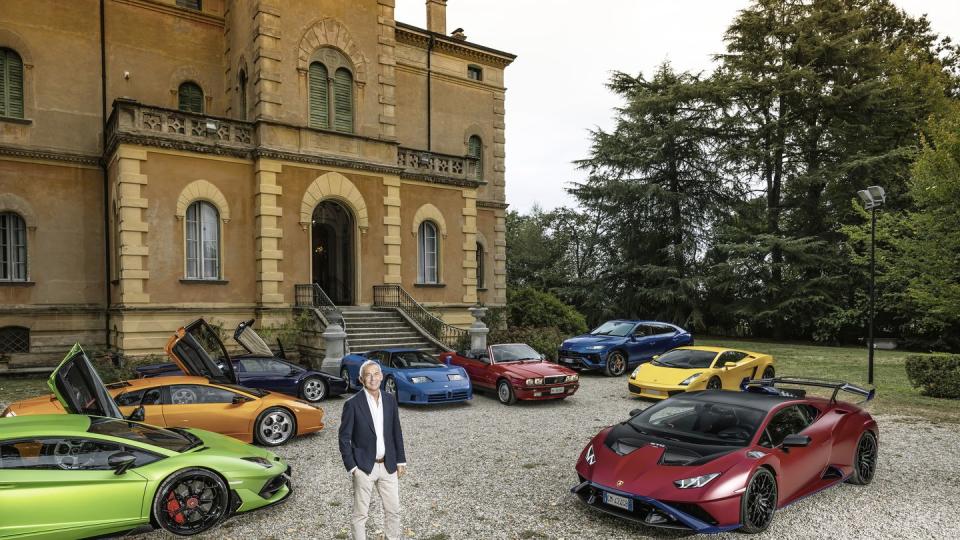
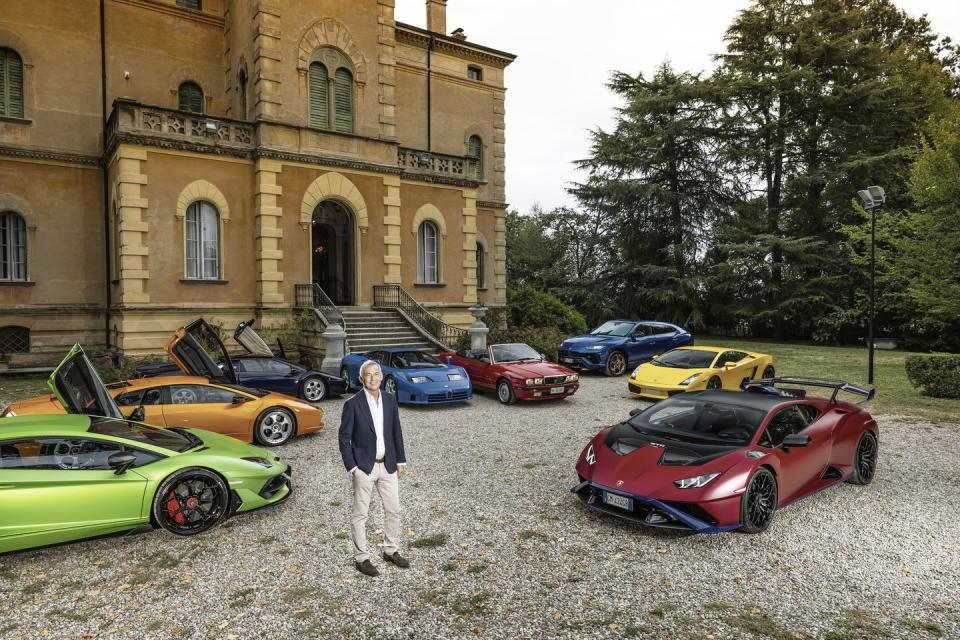
Being responsible for the design of the 60-valve quad-turbocharged V12 that powered the Bugatti EB110 would have been the pinnacle of most automotive engineering careers. But for Maurizio Reggiani, it came close to the start. The 64-year old Italian retired from Lamborghini at the end of last year after spending 29 years with the brand, most of them as the company’s development boss and latterly as Chief Technical Officer. As such, he has led the technical development of more supercars than anybody else.
The point was made late last year when I got the chance to spend a day with Reggiani and a collection of almost all of his career highlights at a villa in Italy. Both Lamborghini and several generous owners had worked together to bring a set of cars together ranging from a 1983 Maserati Biturbo to a 2022 Lamborghini Huracan STO.
“I think I was very happy to have my job during the most iconic time of the super sports car with the thermodynamic engine, I know this era will soon be over,” he says, “when I first started working for Lamborghini there were 200 employees in total, and we made 200 cars a year.”
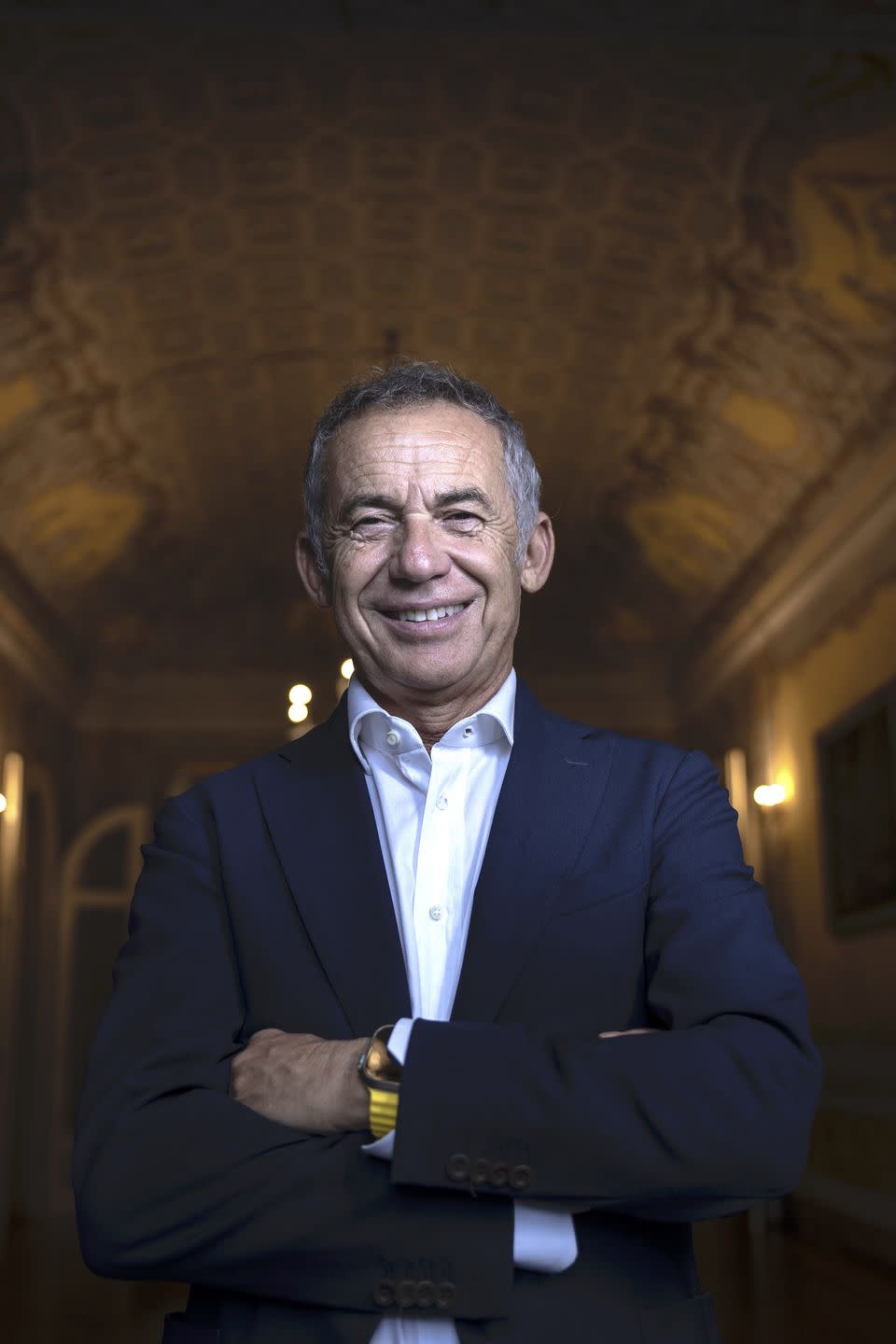
By the time of his retirement Lamborghini had over 2000 employees, and the company broke the 10,000 annual production mark for the first time in 2023. For a perspective of how small the supercar industry used to be, at the point Reggiani joined Lamborghini in 1995 the brand had produced a total of just over 8000 cars in the 31 years since its formation.
But before Lamborghini, and before Bugatti, came Maserati - where Reggiani started working after leaving college with a mechanical engineering degree. He was sent to the engine department, of critical importance as Maserati had recently launched the Biturbo, the first passenger car to use a twin-turbocharged engine as well as an innovative triple-valve cylinder head design with both intakes opened by a single tappet. One of Reggiani’s early roles was to adapt the engine to use fuel injection rather than the notoriously unreliable pressurized carburettor of early cars, which suffered from chronic vapor lock when hot.
This early expertise would prove to be a career-changing one. “After five years at Maserati I was called by what would now be called a head hunter,” Reggiani remembers, “he wanted to recruit somebody with expertise with turbo engines for an important historical brand, but he was not allowed to tell me the name.”
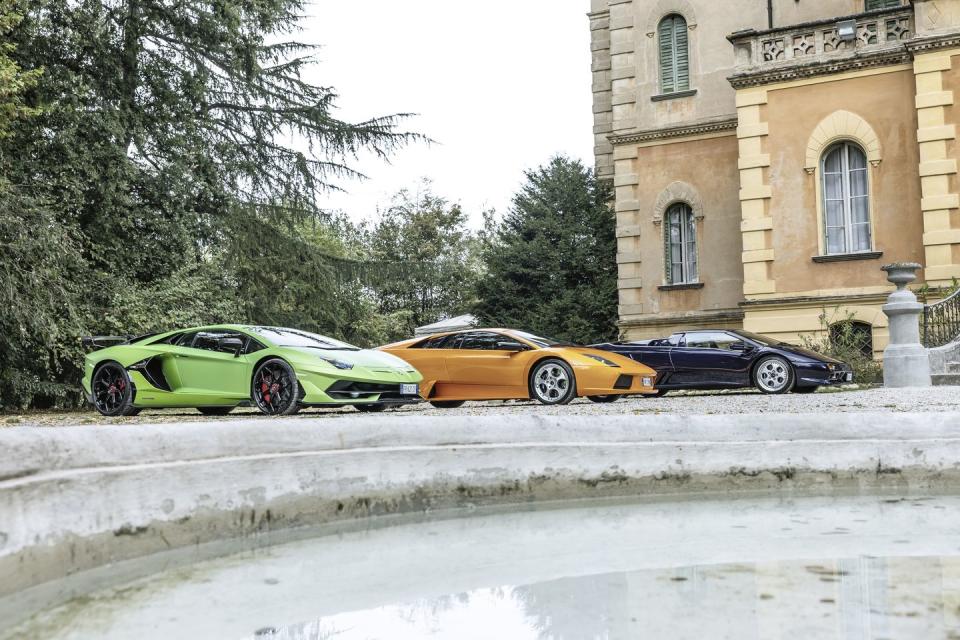
Reggiani turned the mysterious offer down. Life at Maserati might not be thrilling, but it was secure. Soon after he received a second call, this one from Paulo Stanzani, Lamborghini’s one-time technical director and now a senior figure in the unidentified new project. “I knew his fame, of course, and was very flattered he had called me personally,” Reggiani says, “he said they needed me to come, and even though he would not tell me the name of the company he said I had to trust him.”
Reggiani did, and so became the second employee of what he soon discovered was Bugatti Automobili, the attempt by Italian entrepreneur Romano Arteoli to reanimate the long-dormant brand through the creation of the EB110. Despite its historic name, everything at the new Bugatti was to be brand new, and to be positioned above both Lamborghini and Ferrari.
“When we started the project we were trying things that did not exist at that point,” Reggiani remembers, “soon we were planning to do a monocoque in carbonfibre, even to use carbon brakes, which would have been a first for any road car.” (This didn’t happen due to the alarming lack of bite when cold.)
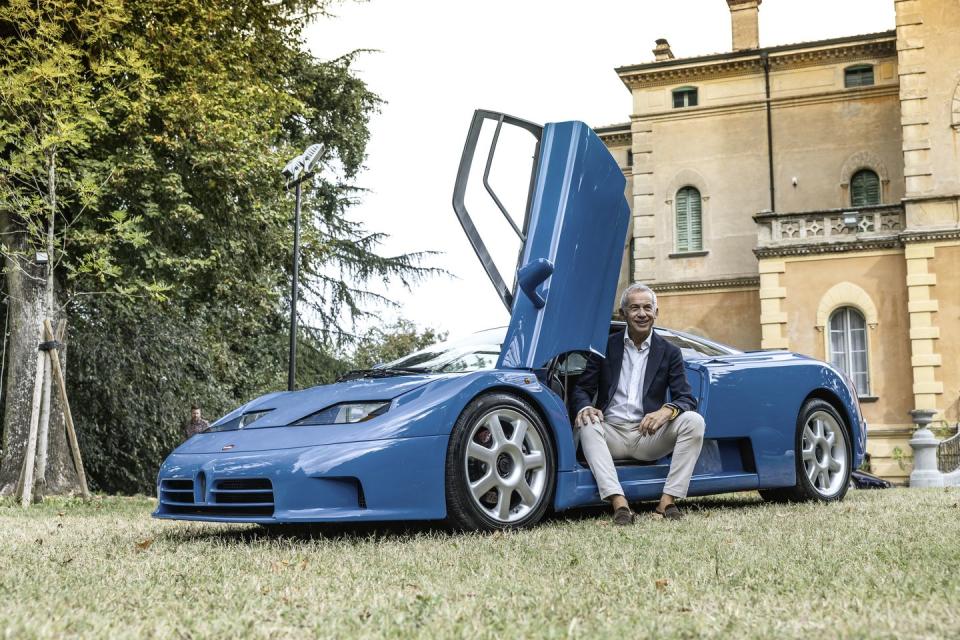
Reggiani was put in charge of the creation of the EB110’s powertrain, which was set to use a turbocharged V12 engine. The big challenge was minimizing lag. “The turbo we would use for the capacity created far too much for a sporty engine,” Reggiani says, leading to the idea of a quad-turbo configuration, “we decided to make three cylinders supply each turbo, and for the turbo to be as small as possible.”
The turbos chosen, supplied by IHI, were almost the same as the ones fitted to the Biturbo. The result was an engine that could deliver both 553hp at 8000rpm - the most of any road car when it was launched - and 451lb-ft at 3750rpm, a very low torque peak by the standards of ‘nineties supercars. The transmission was almost equally innovative, the EB110 featuring the innovation of an all-wheel drive system that could send different amounts of torque to each axle, with a six-speed manual gearbox mounted parallel to the engine to save space.
“Lamborghini were developing the Diablo VT with a visco coupling at the same time, but we could send more torque to the rear, which was fundamental to the performance,” Reggiani says, “ours was a much more advanced system.”
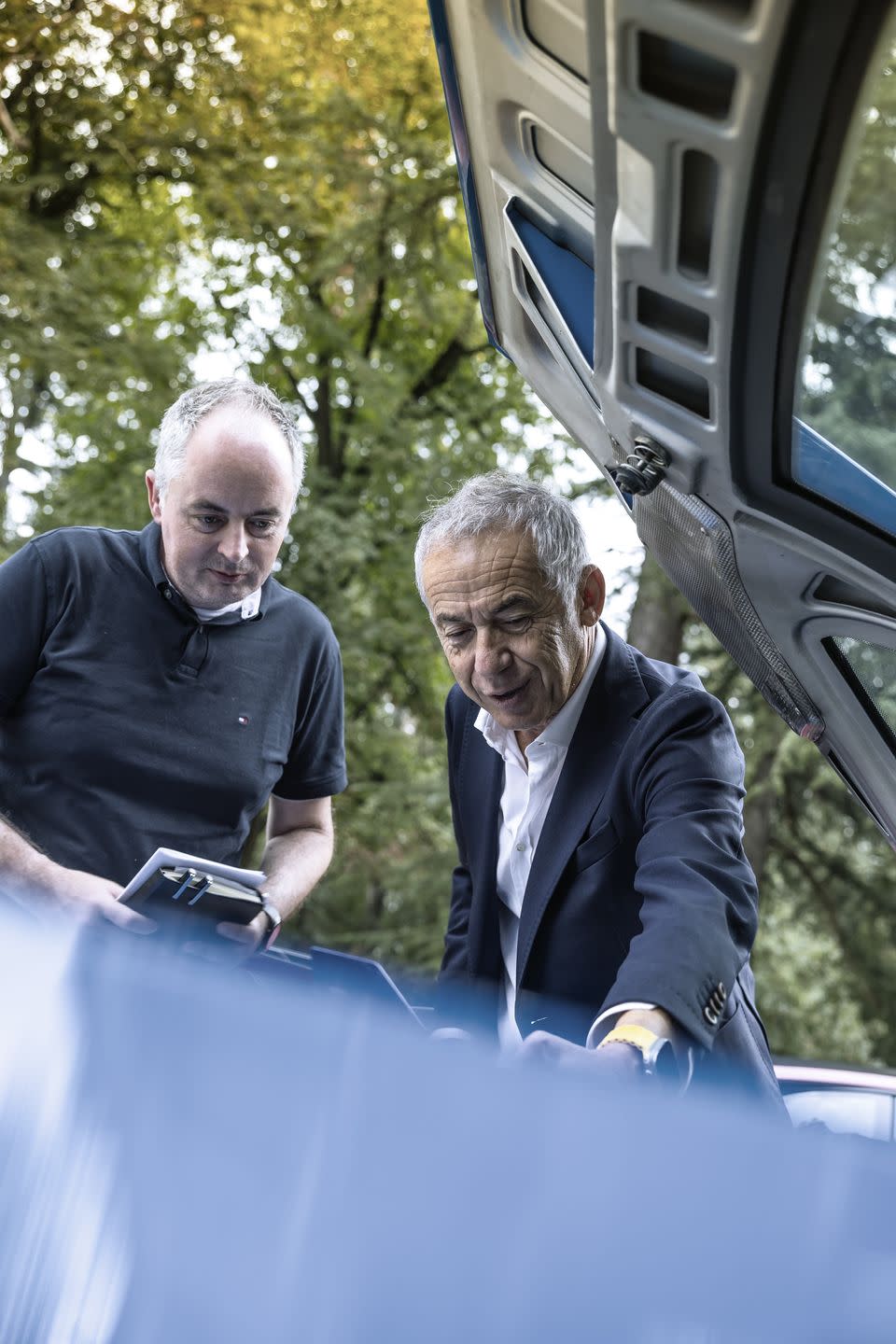
While senior managers came and went during Reggiani’s time with Bugatti, he stayed with the company almost until the end. The departure of Stanzani after a bust-up with Arteoli meant Reggiani also got to work under Nicola Materazzi, who had developed most of Ferrari’s early turbo engines, and then Mauro Forghieri, who had designed many of the Scuderia’s race cars of the ‘sixties and ‘seventies.
“I learned a huge amount at Bugatti,” Reggiani recalls, “I think that we all did, we were a small group and most of us were young enough not to know what impossible meant… and if we only worked 60 hours one week, it was a short week.”
But Bugatti’s innovation was far greater than its ability to persuade the ultra-wealthy to buy its cars; just 139 of the EB110 were produced before the company went bankrupt in 1995. Reggiani left just before the end, turning down an offer from Ferrari to work on Formula 1 engine development to move to Lamborghini, which had just been bought by a consortium of Indonesian and Malaysian investors. It was, he remembers, a huge culture shock.
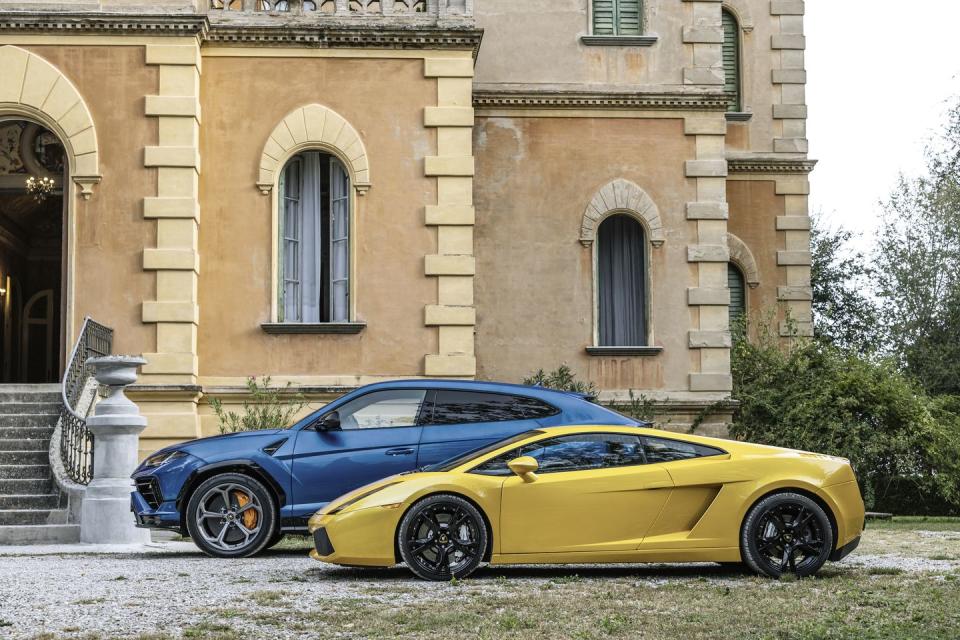
“It was a very old-fashioned company at the time, and a vary traditional one, the complete opposite of Bugatti,” he says, “we had to use what already existed, we tried to make something new without changing anything. There was no money, no resource, and we had to achieve the maximum with the minimum.”
The slow pace of development was shown in the gradual evolution of the Diablo over its 12 year lifespan. But the cash-strapped company wanted to do something much more radical, proposing to replace the Diablo with a car known internally as Project 147, later the Canto. Beyond that, Lamborghini also wanted to create a smaller car built around a brought-in powertrain.
Reggiani and his team started to investigate possibilities for this engine. “We had to scout what already existed in the market,” he says, “we looked at both BMW and Ford [engines], but soon realised that the best for us was the V8 powertrain from the Audi A8, because it was all-wheel drive and we could turn it around 180 degrees to put it behind the driver.”
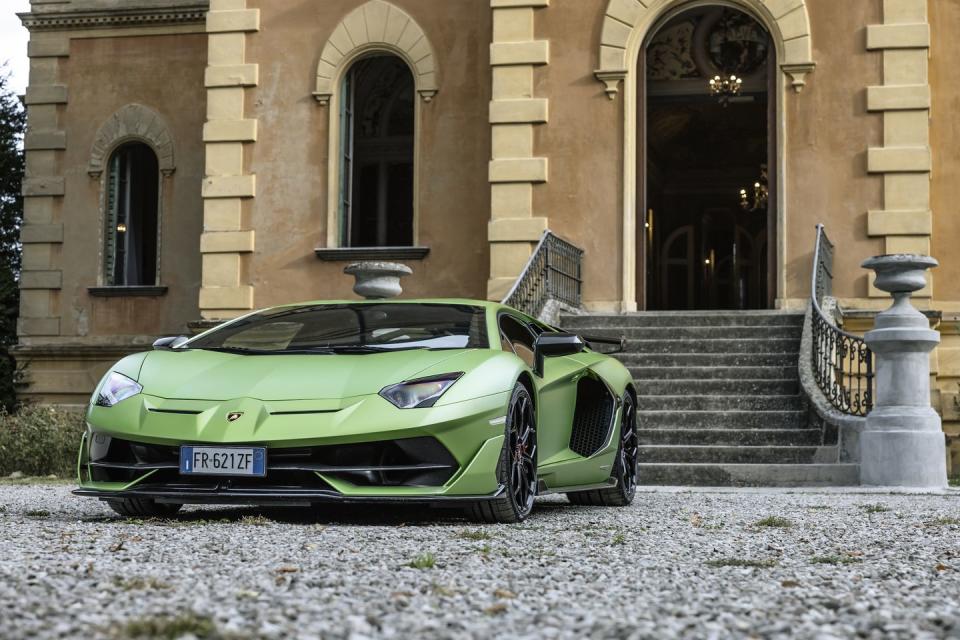
Negotiations with Audi over a supply deal were long, but reached a surprise conclusion. “We arrived at the Detroit Auto Show in 1998 and I met [Ulrich] Hackenberg,” Reggiani remembers - referring to Audi’s then R&D boss - “he said, Maurizio, we have an offer - but there is one condition, that Audi buys Lamborghini.”
Reggiani referred the proposal upwards, and the deal to become an Audi subsidiary was concluded just six months later. Volkswagen Group supremo Ferdinand Piech came to Sant’ Agata to view proposed future models and was impressed by the quality of his new Italian subsidiary’s engineering, but quickly cancelled the proposal to use the Audi V8 in an entry-level model.
“Piech said that Lamborghini cannot have an engine from mass production, it has to be a unique engine,” Reggiani says, “this was when Formula 1 was starting to use the V10, so that is what was decided.”
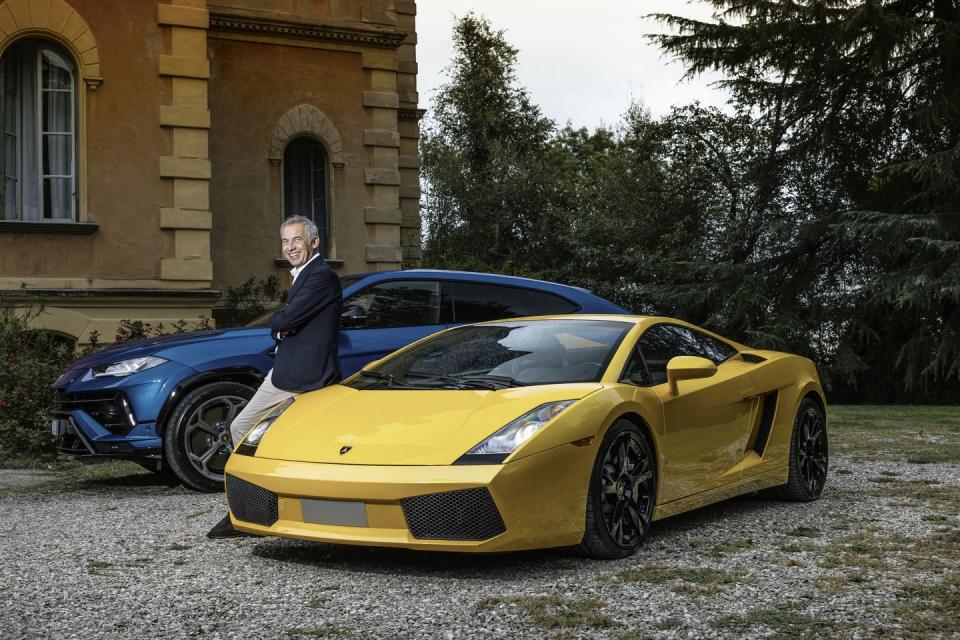
The Canto project was also scrapped to be replaced by an all-new car created using Volkswagen funds. Development of what would become the Gallardo and Murcielago went on in parallel, both featuring edgy styling by a very talented young Belgian designer called Luc Donckerwolke. The new management also seemed to share Reggiani’s determination that Lamborghini be seen as independent, despite the change of ownership.
“The filter has to be emotion, everything is based on engineering - which we could often share - but the characteristics of the cars had to remain unique,” Reggiani says, “the overall Group were experts in engineering, but they accepted that they had to let Lamborghini be Lamborghini.”
The proof of that was in Reggiani’s continued presence there, one of very few non-Germans to have been in charge of development in a VW subsidiary. Apparently Hackenberg used to jokingly complain about the need to communicate in English, as Reggiani doesn’t speak German. “My response was that he could always learn Italian,” Reggiani says with a grin.
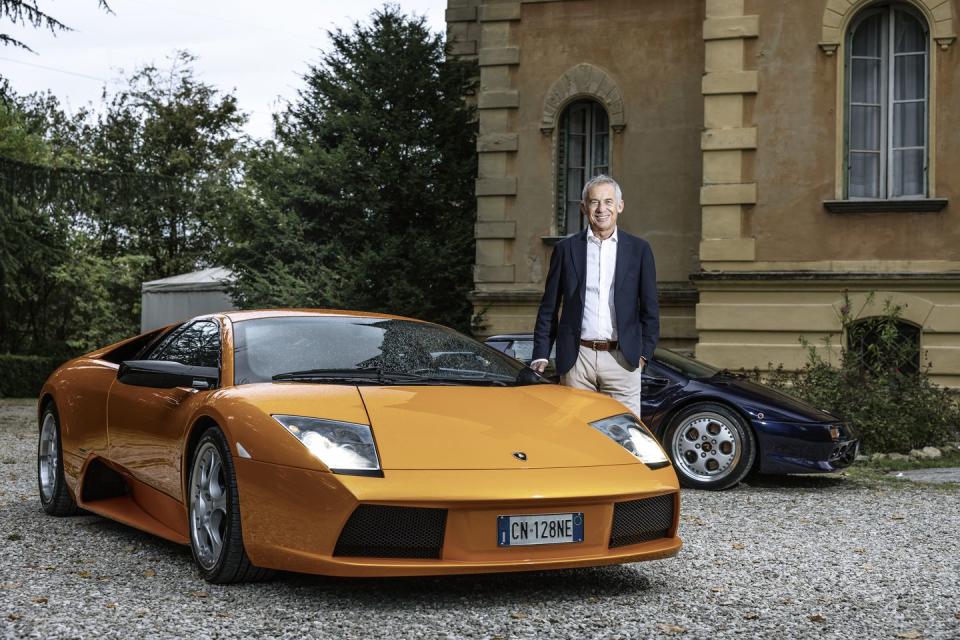
The Murcielago sold better than the Diablo had, but it was the cheaper Gallardo that transformed Lamborghini’s fortunes. By the time it retired in 2012 the total production run of 12,000 cars represented more than half the cars that Lamborghini had built up to that point. This success unlocked more development money and saw Reggiani promoted to become Chief Technology Officer, a role that gave him the ability to ensure the Murcielago’s replacement would be a revolutionary rather than evolutionary step.
Reggiani decided early on that the Aventador would combined multiple firsts for Lamborghini. It would have a carbonfibre structure - developed with the help of Boeing’s work on the structure of the 787 Dreamliner aircraft - as well as motorsport style pushrod operated suspension, plus a brutally fast Independent Shifting Rod transmission, where the process of disengaging one gear and engaging the next happens at the same time, not as separate processes.
“People might be surprised to hear we could have had a double clutch gearbox, but it would be too heavy for what we wanted,” Reggiani says, “the ISG was the better solution for the car.”
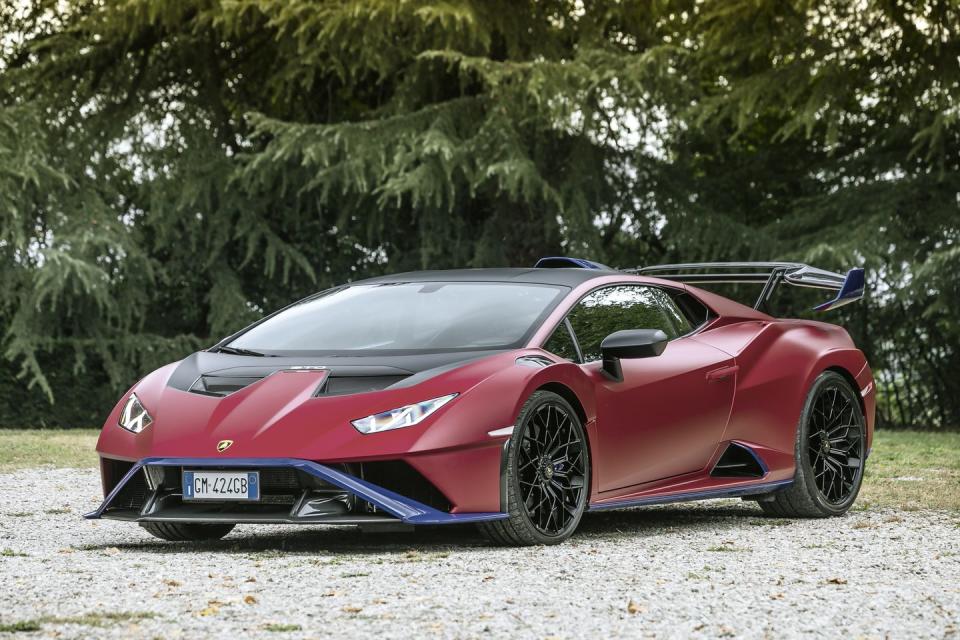
The level of complexity meant Reggiani had to present his proposal for the Aventador to the main Volkswagen board for approval. “They said it was too much in one shot, two big a risk. I said a car is like a marriage, you couldn’t pick and choose between the different parts.”
The result was the car that Reggiani regards as the pinnacle of his career as an engineer, but which also proved to be a huge success. By the time the Aventador retired Lamborghini had produced a total of 11,400 cars - more than double the original sales projection.
Reggiani was also responsible for the development of what has already become the most successful Lamborghini of all time. Also one of the most controversial: the Urus.
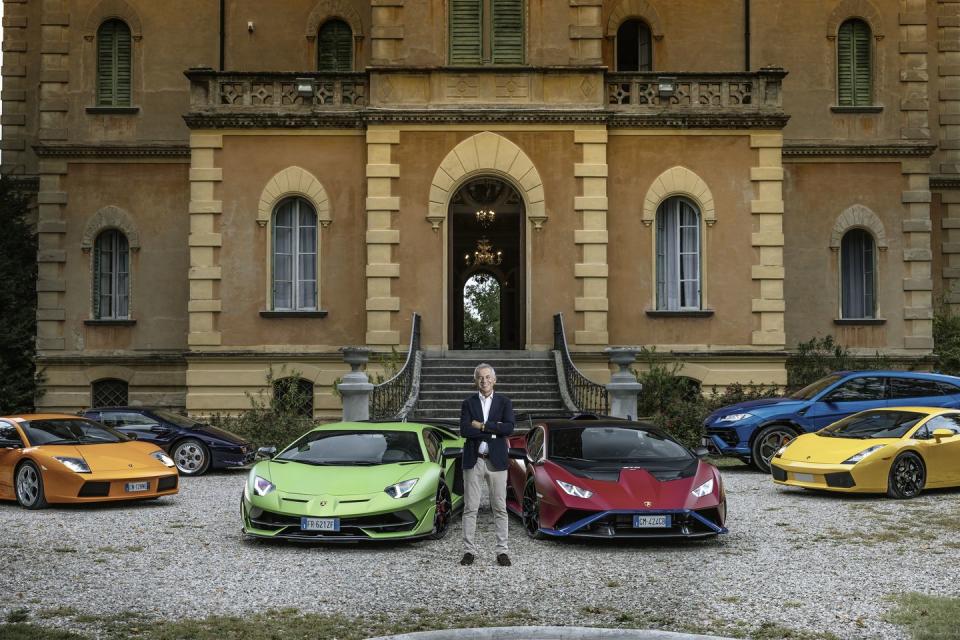
The challenge in creating Lamborghini’s second SUV, after the monstrous LM002, was the need to share a platform - the Urus sitting on the same underpinnings as the Volkswagen Touareg, Audi Q7, Porsche Cayenne and Bentley Bentayga.
“This was a negotiation,” he remembers, “one of the biggest challenges was persuading the rest of the group to change the platform so we could make those chances necessary for our DNA… Even lowering the seating position was a huge challenge, but that is vital for the character of the car. And when I said we needed carbon-ceramic brakes there was another fight, as nobody else was planning to use them. I remember the arguments - ‘Maurizio, can you not limit speed to 295km/h so you don’t need these?’ No, we need to do 305km/h!”
Reggiani also led the early development of the Revuelto, insisting it continued to use a naturally aspirated V12 rather than switch to a downsized turbo engine. Something made possible through the use of hybrid assistance. But before the Revuelto was finished he moved to his final role at Lamborghini, as the company’s head of motorsport, overseeing the creation of the forthcoming LMDh hypercar challenger.
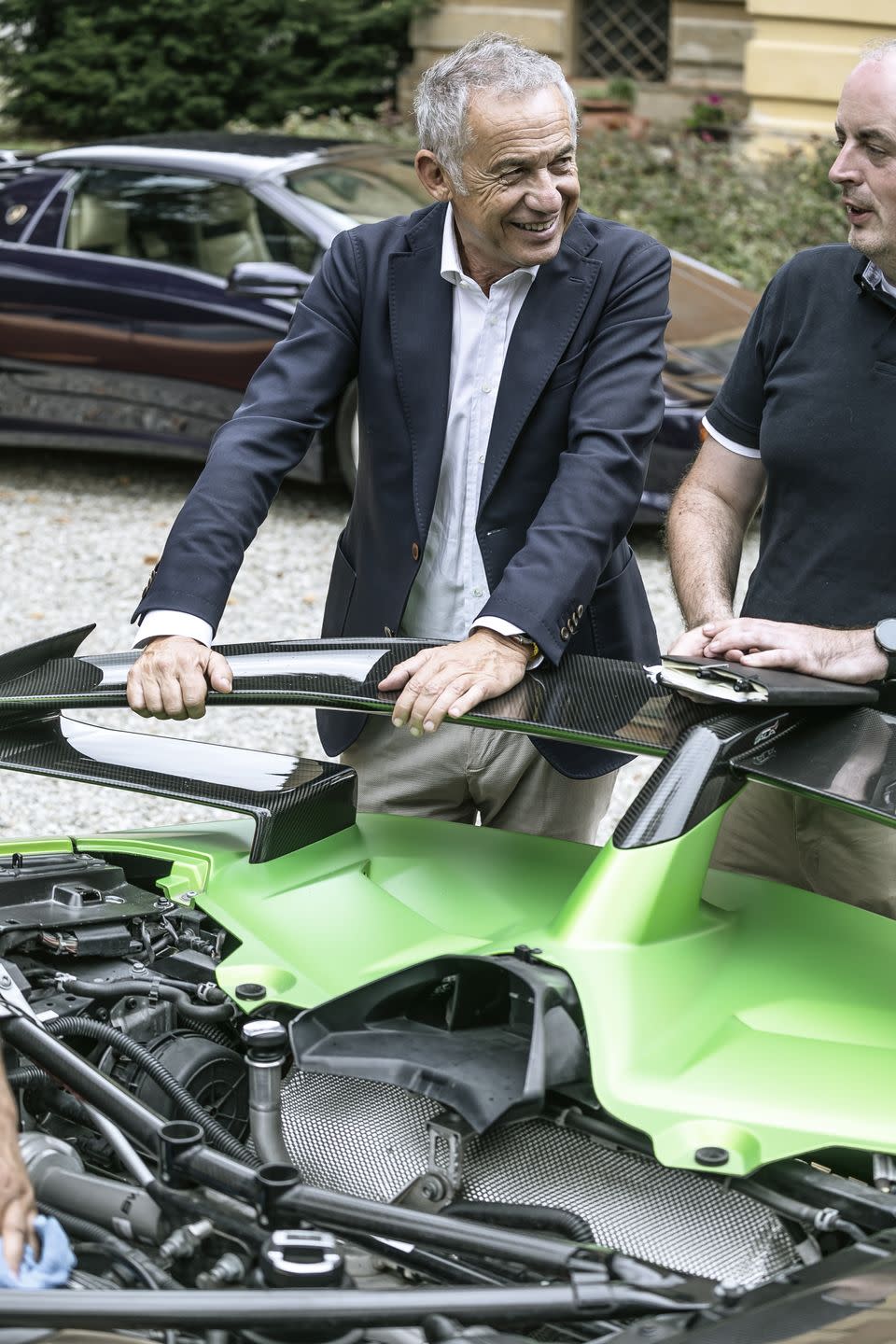
Just before his retirement the scale of Reggiani’s career was recognized by the award of an honorary doctorate in mechanical engineering from the University of Bologna. It was the first time the world’s oldest university had awarded that particular distinction since giving one to Enzo Ferrari, 62 years earlier. It was, he admits, the greatest honor of his professional life.
Also a fully deserverd one. Reggiani’s professional life has followed the supercar from the days of hand-built construction, tiny volumes and often indifferent quality to the modern age of cutting-edge technology and astonishing dynamic virtuosity. He did more to steer this revolution than anybody else, and even if he regards the Aventador as his masterwork his influence - in this hyper-competitive part of the market - is visible well beyond the company he worked for. Without the challenge of Volkswagen-era Lamborghini would Ferrari have ever felt the need to raise its game to its current level of awesomeness? Without the example of the Gallardo’s success, would McLaren Automotive even have got launched?
Maurizio Reggiani was the supercar’s superstar. His industry will miss him.

A car-lover’s community for ultimate access & unrivaled experiences.JOIN NOW Hearst Owned
You Might Also Like

 Yahoo Autos
Yahoo Autos 